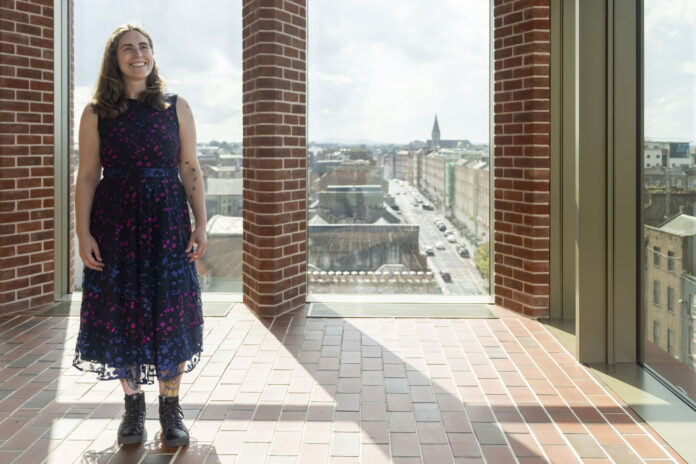
SIR James Emerson Tennent visited in Limerick while touring Ireland in 1836. The 32-year-old was born in Belfast but had travelled extensively. As a young man, he travelled to Greece to join the artillery corps formed by the famous poet Lord Byron. Emerson Tennent spent several years in Greece and authored three books while there. He would later become a politician.
Emerson Tennent took pen to paper while in Killaloe on October 3, 1836, sitting down to write a scathing review of his time in Limerick over the previous days staying in the Globe Hotel on William Street.
The hotel contained a large yard, a seven-horse stable, and a coach house. In January that year, Mrs Crosbie, the owner of the hotel, was left several thousand pounds by a relative in England. Six months earlier, her husband Joseph Crosbie passed away.
Perhaps she lost interest in the running of the hotel with these two extreme changes in her life, as Emerson Tennent found reason to complain, stating, “we had no particular reason to be pleased, and were especially annoyed by being supplied with nothing but brackish water; any other being very scarce in the city, though some works have been lately erected for its supply.”

- External Walls: Up to €8,000 Grant
- Attic: Up to €1,500 Grant
- Cavity Walls: Up to €1,700 Grant
- Internal Dry Lining: Up to €4,500 Grant
Whether influenced by his words or not, the hotel went for auction on New Year’s Eve 1836.
Emerson Tennent was not impressed by the Georgian grid system, saying the “main streets are showy, but they have a comfortless look, and there is an air of forced improvement about the city by no means so gratifying as the less imposing but spontaneous prosperity of other towns we have been visiting.”
The Georgian city was new, shiny, and still in process, having only been founded a few decades earlier. There was a vast contrast between this and the ancient city, who Emerson Tennent described as “the miserable and indigenous poverty of the one, presents to the recent, and evidently exotic, splendour of the other”.
‘Signs of anticipated improvement’
Again, after travelling to Pery Square, which was under construction at the time, the contrast he saw was evident. The pillar and statue of Thomas Spring Rice was completed in the centre of a gated park. Thomas Spring Rice was very much alive when this large monument was erected in his honour. It was surrounded by green railings to keep those without keys out.
“All these are signs of anticipated improvement, rather than of existing prosperity,” Emerson Tennent wrote, noting that within a stone’s throw of this new park and the grand houses of Pery Square were “a few rows of wretched hovels”.
He did commend the city for having an excellent main street, stating that there was an appearance of trade and activity in every quarter – hindered, however, by “an awful accumulation of poverty … and a greater proportion of desolate ad cheerless abodes of destitution than in any other city in the kingdom”.
He deemed the Castle and St Mary’s Cathedral to be neither “picturesque nor attractive”, but he did admire the ring of bells in the square tower of the cathedral.
An important note was that Limerick had recently seen the ravages of a cholera epidemic through the city. In June 1832, the disease hit the city killing those from all sections of society and causing many more to flee the plague. So, the Limerick Emerson Tennent saw was one of recovery.
He commended the new buildings which used stone instead of brick in their facades, such as Limerick Prison on Mulgrave Street and House of Industry, North Strand (Clancy Strand). He deemed the newly opened Wellesley Bridge (Sarsfield Bridge) to be “beyond all question the very finest in Ireland – of great dimensions, and from a most graceful design, by the late Mr Nimmo.”
A kind word for the Barrington family
Emerson Tennent commended the Barrington family, especially Matthew Barrington for his “exertions of this benevolent and truly public-spirited gentleman”, for the erection of a hospital and a Mont de Piété, to supply the labouring classes with loans of money, at a fair rate of interest, the profits to go ultimately to the poor; and last, not least, he has founded, endowed and supports, the splendid Hospital on the quay.”
In 1840, the Mont de Piété was mentioned in the Triennial Trade Directory and had made a profit of £1,357 that year. Though following this initial boost the Mont de Piété made a steady loss year on year until 1845 when the pawn shop was closed and building was converted into a convalescent hospital for the patient of the Fever Hospital (today St John’s), even as a recovery wing the building was not a success. In 1847 it was used as a soup kitchen by the Society of Friends to aid the poor in Limerick during the height of the famine. From 1847 it was used as a police barracks at an annual lease rate of £26 until it was abandoned and was demolished in 1892.
Emerson Tennent’s final note on the day he left was that the city “was all a ferment, owing to the installation of the new mayor, and the retirement of the old, who, being rather unpopular, was greeted with anything but “sweet” voices on his resignation of the civic robes.”
The old mayor was William Gibson, while the new mayor was John Vereker Jnr, who had held the role three years earlier.

